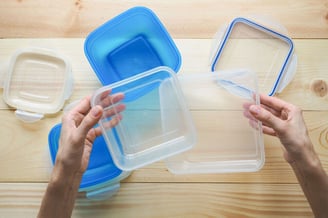The Essential Guide To Food Packaging Design

Food packaging design must blend form and function to keep food safe while attracting customers to your brand. Packaging used for shipping must provide additional protection against rough handling and environmental conditions. Learn more about the basics of packaging design for food products and what you need to consider.
Components of Food Packaging Design
Food packaging must meet several criteria to ensure food gets safely from one location to the next. The level of packaging can vary depending on the requirements, but you should generally consider keeping contaminants out of packages while providing adequate cushioning.
Sanitation
Some considerations for ensuring sanitary food packaging design include using food-safe materials and creating secure, user-friendly closures. Labels must convey important information about the food items inside, including:
- Allergens
- Ingredients
- Nutritional information
- Production information (dates, lots, etc.)
All food package designs must comply with the regulations and guidelines of the U.S. Department of Agriculture and Food and Drug Administration. If your local jurisdiction has additional laws, you must also follow them.
Physical Protection
Effective food package design must protect food from physical damage, contamination, and environmental factors throughout distribution and storage. The level of protection required depends on the food type, transit conditions, and storage environment. You should consider whether the food must be protected from oxygen, moisture, or light exposure.
For example, delicate food, such as fresh produce, that is shipped long distances requires more extensive protection than many dry goods.
Branding
You need to consider how your packaging conveys your brand information and image. The level of packaging may affect this. For example, direct-to-consumer food items should have attractive packaging with thought given to color psychology and shape to help promote your brand to purchasers. Food packaging designs should also have clear markings and labels that meet regulatory requirements.
Food Packaging Materials

Materials used for food packages include plastics, paperboard, glass, and metal. They play a major role in ensuring safety. Some considerations when choosing a material include:
- Suitability for Food Contact: Any material you select for primary packaging must be suitable for food contact. The FDA maintains an extensive database of allowed materials and monitors potentially dangerous substances. Food items shipped to European Union countries must use food-contact materials that comply with Regulation (EC) No 1935/2004.
- Sustainability: Manufacturers and consumers are increasingly aware of packaging's environmental implications. Recycled, recyclable, and compostable materials boost sustainability efforts. At ReadyMade Plastic Trays, we focus on reducing waste, optimizing materials, and improving recyclability without compromising food safety. Our trays are made from high-impact polystyrene (HIPS) and high-density polyethylene (HDPE)—both of which are lightweight, durable, and widely recyclable.
- Temperature Controls: Cold chain packaging requires materials that remain stable under freezing temperatures without becoming brittle. Hot food packaging must withstand high temperatures without warping or releasing harmful chemicals. ReadyMade’s HIPS and HDPE trays are designed for temperature stability, ensuring protection across various storage conditions.
Plastics are ideal food packaging materials because they provide lightweight protection. Many are also safe for direct food contact. At Ready-Made Plastic Trays, we frequently design food packaging using high-impact polystyrene and high-density polyethylene plastics. These are lightweight and durable, offering excellent physical protection.
Take the Guesswork Out of Food Packaging Design
Our team has extensive experience designing food-safe trays for manufacturers. At ReadyMade Plastic Trays, we offer both stock and custom food packaging design solutions to protect your food while meeting industry regulations. Contact us to request a free sample and find the perfect fit for your product.



